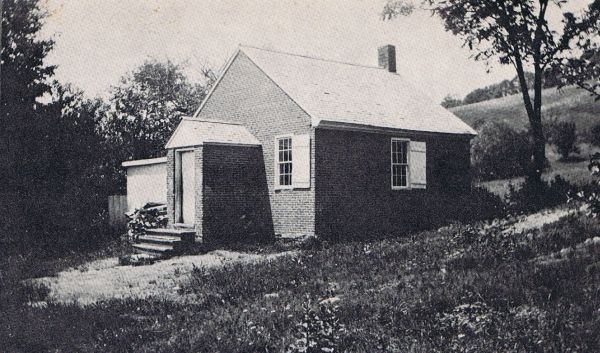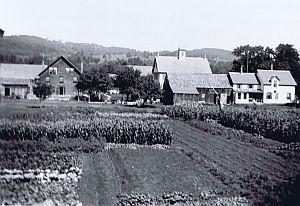
(Host) Westminster is a sleepy, rural town, with broad flat fields bordering the Connecticut River.
A hundred-fifty years ago, it was busier, with a respected boarding school and lots of stores. A newly published journal and exhibit brings the Westminster of that era to life through the eyes of a 17-year-old girl.
VPR’s Susan Keese has the story.
(Keese) Fannie Grout was a Westminster girl who moved away after she married at the outset of the Civil War. The town had little record of her until her journal turned up in a group of papers bought by a man from Petersham, Massachusetts. He was researching the family Fannie married into.
(Caggiano) "And he sent it … to our society and he said, ‘Would you like it?’ And of course, I said, ‘Yes, please.’"
(Keese) Standing in the Westminster Historical Society Museum, one flight up from the town hall, Alice Caggiano recalls getting her hands on the journal for the first time.
(Caggiano) "And I started to read it and I could not put it down. And I said, ‘This is part of our history. We have to have this transcribed so people can pick it up and read it.’"
(Keese) In the end, Caggiano transcribed the diary herself. Racheal Scott agreed to proofread – and she also fell in love with the bright, busy girl who started the journal on Sunday evening, November 18, 1855.
(Scott reads) "Today is my 17th birthday and for the first time I have commenced writing a journal….I think it is important to write something every day, for it learns us in writing as well as composition."
(Keese) Scott thinks Fannie’s life will be surprising to people growing up in Westminster now.
The town was a busy train stop in the mid-19th century.
(Scott) "And Fannie writes a lot about the train. She refers to it as ‘The Cars.’ And it stopped not far from her home."
 (Keese) The Westminster Seminary, still standing, was a magnet for high school-aged students from all over New England. Fannie’s family took in boarders attending or working at the school.
(Keese) The Westminster Seminary, still standing, was a magnet for high school-aged students from all over New England. Fannie’s family took in boarders attending or working at the school.
Scott says there were lectures, socials, prayer meetings and lots of visiting among relatives and friends.
(Scott) "This girl had some social life! She goes to the lyceum almost every night, visits her girlfriends all the time… they have sewing groups."
(Caggiano) "Singing groups."
(Keese) Caggiano reads an entry from Christmas Eve, 1855.
(Caggiano) "The bell is ringing for nine o’clock and this evening has seemed very short… I went down to see Nellie a few minutes and then down to Stella’s, and from there to the sing at the school room with Ella and Stella. Oh! It was a great sing… After it was over I went with Mrs. John Mays to come home with mother. It is very icy now. T’would be real nice to go out and slide on a moon shiny night!"
(Keese) The journal only goes through June of 1856. That spring, Fannie takes the test to become a teacher.
Scott and Caggiano say they loved reading about Fannie’s preparations for her first job, and watching as she changes from a school girl to a teacher.
This summer, the Westminster Museum has put together an exhibit that illustrates what Fannie’s life was like.
Unfortunately, there are no pictures of Fannie Grout – except for the very vivid image her writings provide.
For VPR News, I’m Susan Keese.